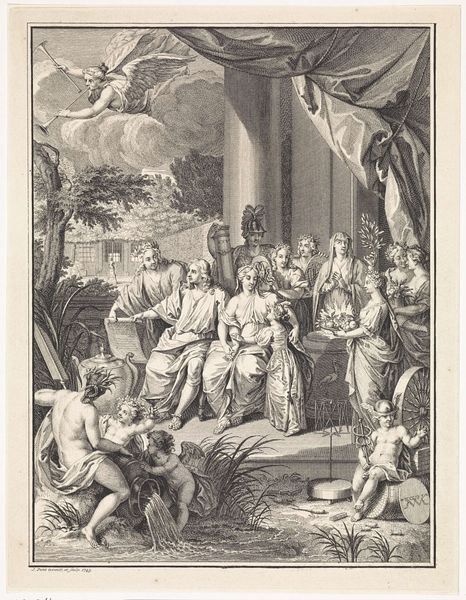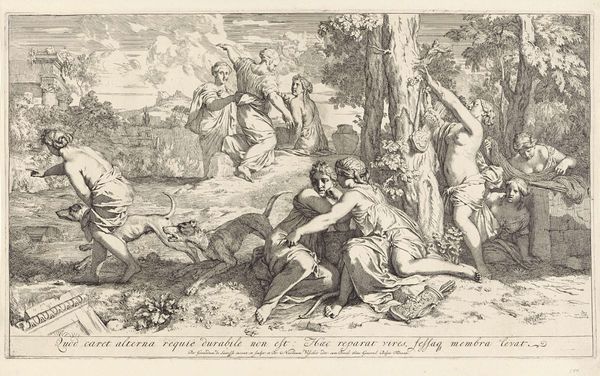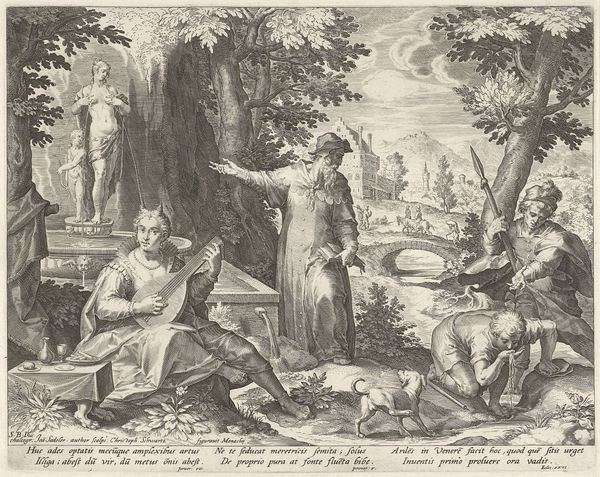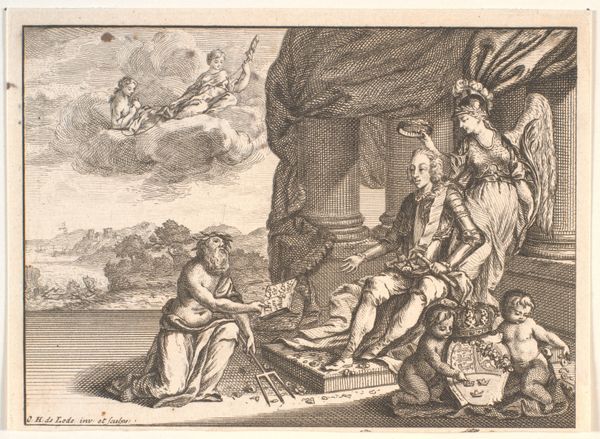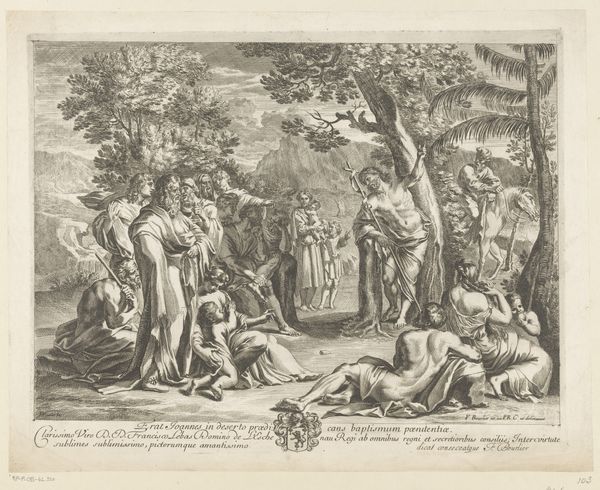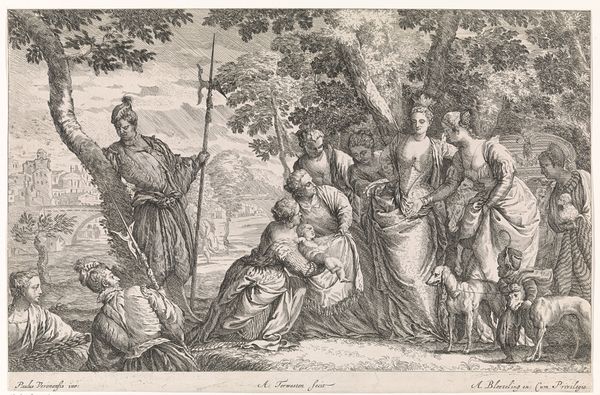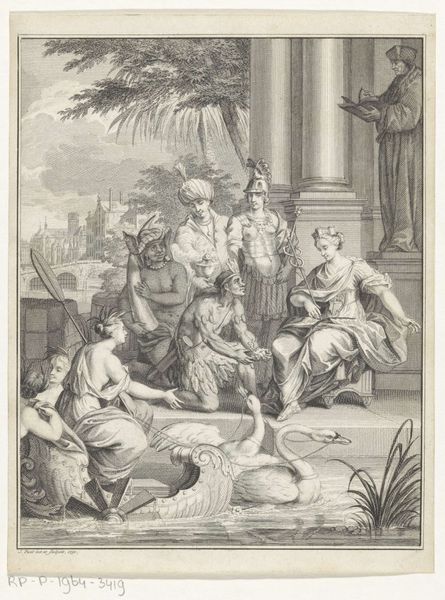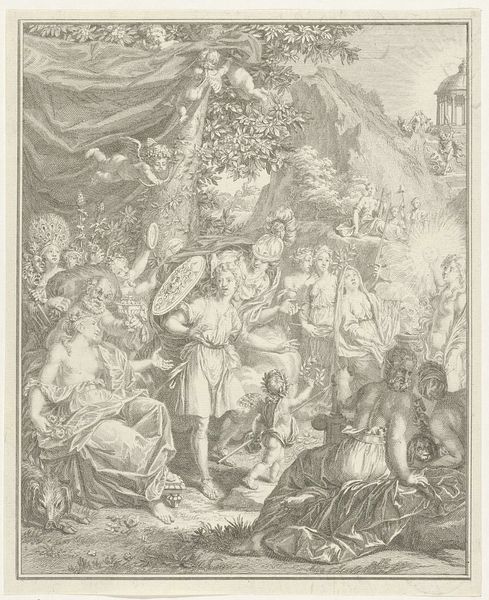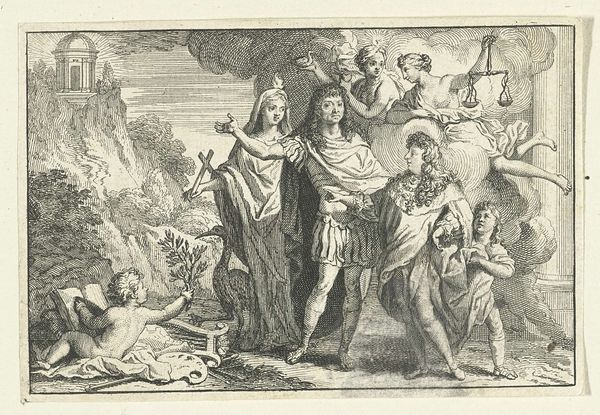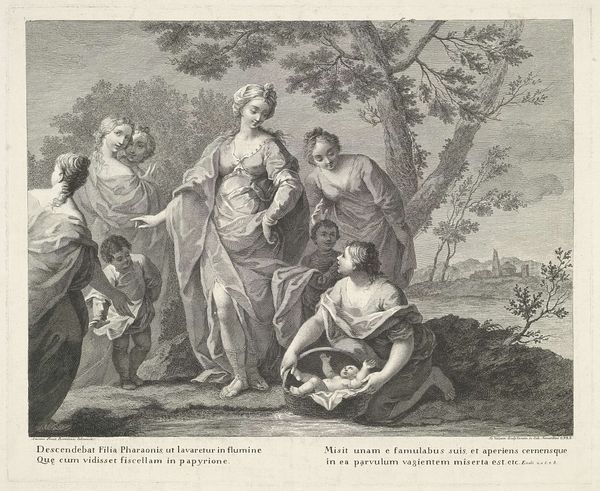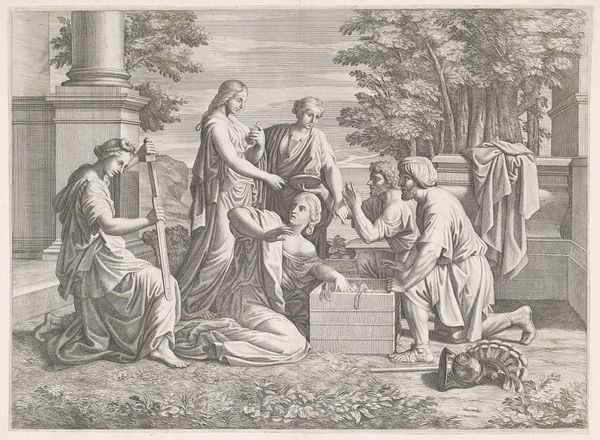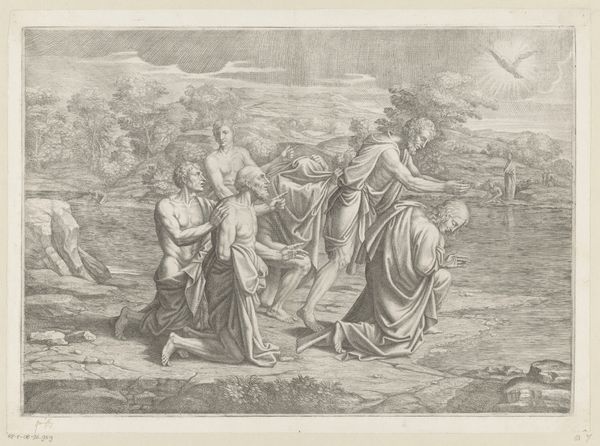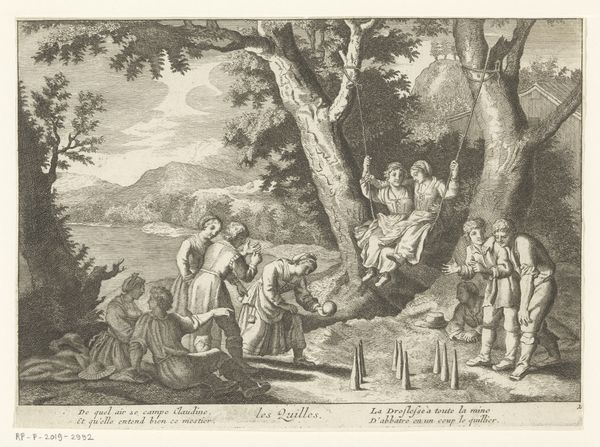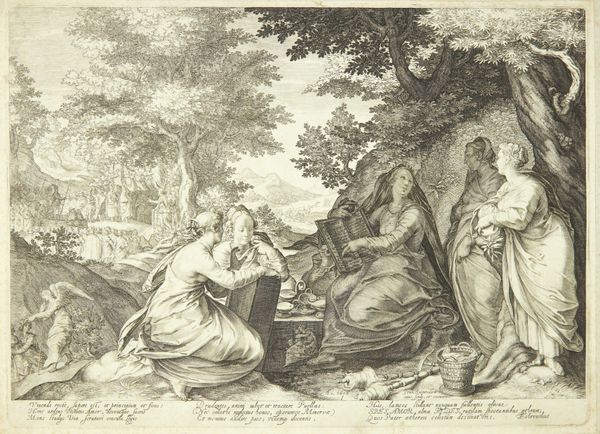
Achilles door Odysseus herkend temidden van de dochters van Lycomedes 1620 - 1692
0:00
0:00
print, engraving
#
baroque
# print
#
pen sketch
#
pencil sketch
#
old engraving style
#
landscape
#
figuration
#
pen work
#
pencil work
#
history-painting
#
engraving
Dimensions: height 371 mm, width 510 mm
Copyright: Rijks Museum: Open Domain
Curator: This engraving, made between 1620 and 1692 by Pietro del Po, depicts a scene from classical mythology, Achilles discovered by Odysseus among the daughters of Lycomedes. Editor: It’s incredibly detailed. My first impression is one of contained drama, heightened by the precise linework and the pastoral backdrop that seems to be pushing against what will occur. It looks to me like an entire story distilled into a single moment. Curator: Exactly. The composition highlights that pivotal moment of unveiling. By dressing Achilles as a woman, his mother Thetis attempted to hide him away from the Trojan War, seeing his death prefigured in prophecy. Odysseus arrives to expose him through a ruse. The work stages the exposure in terms of unveiling. Consider how the artwork might reinforce historical biases surrounding gender roles and societal expectations. Achilles' 'true' identity is here coded as the male warrior revealed via weaponry. Editor: Note that Achilles, upon being presented with weapons and armor, is immediately identifiable, his 'true' self awakened and apparent. It makes one think about the layers of disguise and recognition that permeate identity itself. I am fascinated with how classical motifs echo into Renaissance sensibilities regarding heroism and fate. Do you think del Po invites a challenge to this heroism, exposing the tragedy woven into these very archetypes? Curator: Undeniably. This print is not merely illustrative, it offers itself to engage in a discourse around war, identity and fate as well, particularly masculinity. Consider how Thetis' initial act is portrayed - not as an expression of protection, but perhaps a limiting imposition of her role as his mother in determining his destiny. Her actions against gender fluidity challenge accepted power structures. The work invites reflection on the complex, fraught choices that underpin selfhood and purpose. Editor: Indeed. It is as though these figures from myth, caught in a web of destiny and choice, reflect, through symbolic association and psychological insight, universal themes that still hold significance for us. The recognition scene becomes a moment pregnant with anticipation, where both individual fate and societal values collide. Curator: Exploring the cultural, psychological, and historical textures provides the ground for that possibility. Editor: A small print, yet with monumental implications—I'm struck anew by art’s enduring power.
Comments
No comments
Be the first to comment and join the conversation on the ultimate creative platform.
